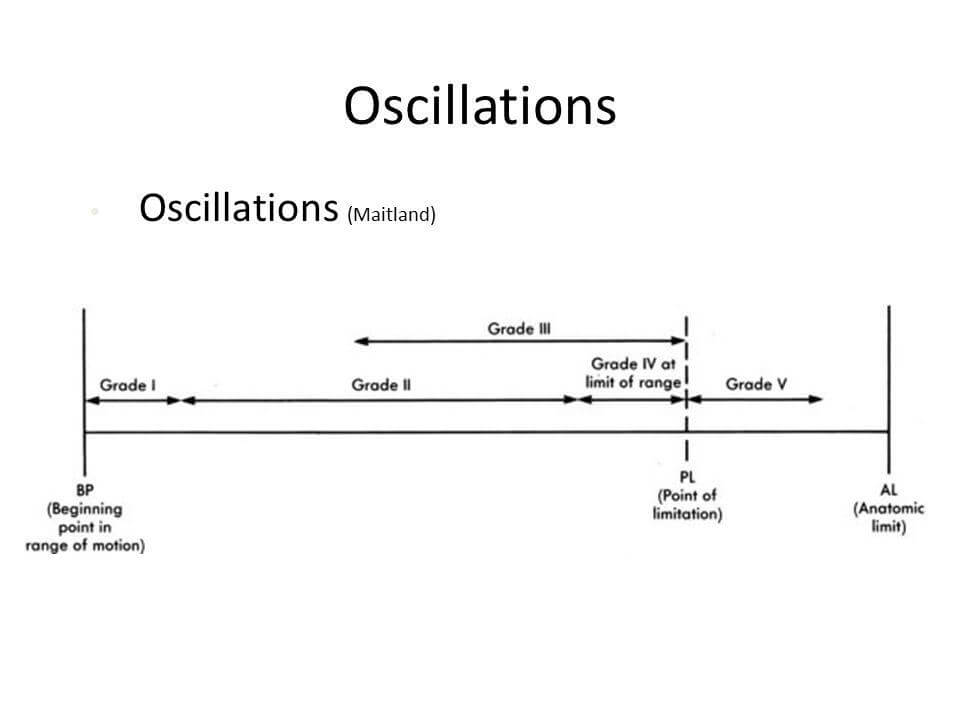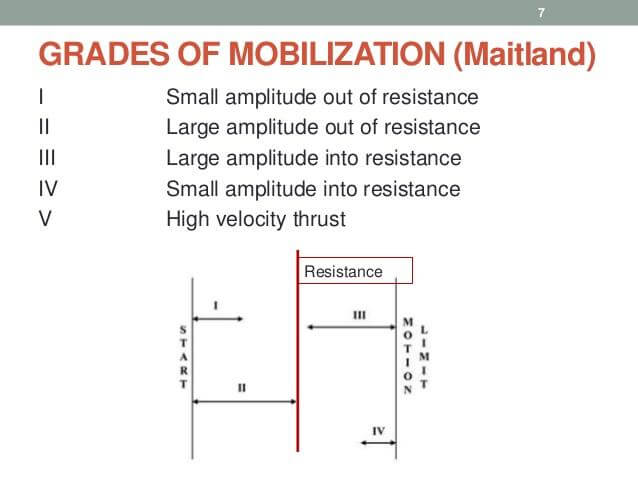For those unfamiliar with the picture above, this is from the movie The Princess Bride in the late 80’s. After his boss Vizzini continues to exclaim “Inconceivable!” every time something doesn’t go as planned, Spanish swordmaster Inigo Montoya makes the confused statement “You keep using that word. I do not think it means what you think it means.”1
I believe the colloquial definition of Grade V mobilization reflects a similar situation in clinical practice to this movie. In PT school, most of us were shown some variant of the following scales to illustrate the joint mobilization techniques popularized by Geoff Maitland (see below). As a quick reminder, the scale demonstrates the different grades of force relative to tissue resistance and end-range.
In my opinion, these visual representations are useful for single-plane, slow, oscillatory movements of the spine and extremities. Grade V can be accurately conceptualized in this framework as being a little farther than the sensation of “motion limitation.” Accurate inference of these diagrams is that Grade V is inherently riskier than the other grades, as it occurs past the joint’s motion limitation and closer to tissue failure (i.e., anatomic limit).
However, where I believe the diagram breaks down is equating the end-range, inherently-riskier Grade V mobilization to the mid-range, inherently-safer procedure that characterizes thrust joint manipulation (TJM). Although it has not been formally tested, I am confident that the force required in TJM is somewhere between Grade III and IV on the Maitland scale. Check out my next post and YouTube video for further clarification of these ideas.
The take-home message here is that Grade V mobilization and thrust joint manipulation are not synonymous terms, i.e., they do not mean what we have been taught they mean. Moreover, the unfortunate side-effect of conflating the two is that most orthopedic physical therapists consider TJM as dangerous and use it only as a last resort.
References:
1. Scheinman, A. and Reiner, R. (Producers) & Reiner, R. (Director). 1987. The Princess Bride. United States: Act III Communications.
2. https://www.slideshare.net/saurabsharma/principles-of-manipulation-or-manipulative-therapy. Accessed 08/31/2019.
3. https://slideplayer.com/slide/3508924/. Accessed 08/31/2019.





